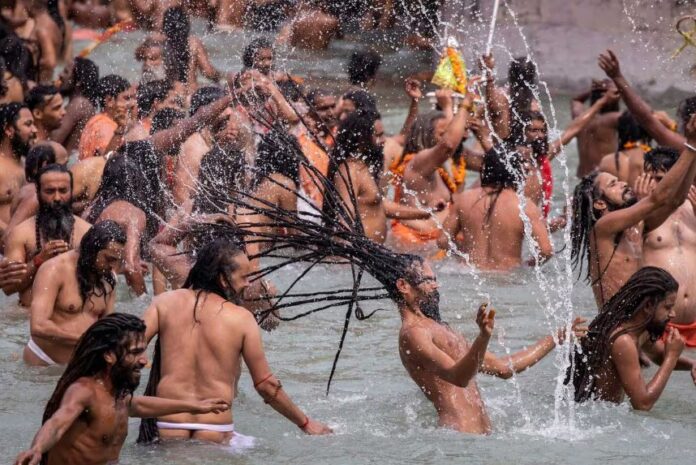Prayagraj, Uttar Pradesh – The Central Pollution Control Board (CPCB) has raised serious concerns about the water quality of the Ganga and Yamuna rivers at the Maha Kumbh pilgrimage site in Prayagraj, deeming it unsuitable for bathing. In a report submitted to the National Green Tribunal (NGT), the CPCB highlighted that the rivers are contaminated with high levels of bacteria originating from human and animal excreta.
The CPCB’s findings, presented on February 3 and noted by the NGT in an order dated February 17, show that on January 12 and January 13, the water quality at most monitored locations failed to meet the primary standards for bathing in terms of biochemical oxygen demand (BOD) and fecal coliform (FC) counts.
“River water quality was not conforming with the primary water quality for bathing w.r.t. Fecal Coliform at all the monitored locations on various occasions,” the CPCB report stated. This contamination has been attributed to the massive influx of pilgrims taking dips in the rivers during the auspicious bathing days of the Maha Kumbh Mela, leading to an increase in fecal concentration.
Also Read: ₹7,500 Crore Budget Maha Khumb Mela! Prayagraj to Delhi Stampede Highlights Poor Planning
Fecal coliform bacteria are indicators of sewage contamination, commonly found in the intestines of warm-blooded animals and humans. Their presence in high numbers in the river suggests significant pollution from sewage, posing health risks to the millions of devotees participating in the holy baths.
The CPCB further noted a slight improvement in water quality post-January 13, 2025, due to the influx of fresh water from upstream locations, reducing the organic pollution in terms of BOD. However, even after this date, the water quality at the Lord Curzon bridge on the Ganga did not meet bathing standards on January 19, 2025.

The NGT is currently addressing a petition concerning the water quality of these sacred rivers during this significant religious congregation. This development has sparked concerns about the health implications for pilgrims, highlighting the urgent need for enhanced pollution control measures to safeguard one of the largest religious gatherings in the world.
Key Points:
Unsuitable for Bathing: The Central Pollution Control Board (CPCB) reported to the National Green Tribunal (NGT) that the Ganga and Yamuna rivers at the Maha Kumbh site in Prayagraj are not safe for bathing due to high bacteria levels.
Bacterial Contamination: High levels of fecal coliform bacteria, which originate from human and animal excreta, were found in the river water, particularly during the pilgrimage’s auspicious bathing days.
Water Quality Failure: Water quality tests on January 12 and January 13 showed that the rivers did not meet bathing standards due to high biochemical oxygen demand (BOD) and fecal coliform counts.
CPCB Report: The CPCB submitted its findings on February 3, noting that the contamination was exacerbated by the large number of pilgrims taking baths in the rivers.
Health Risks: The presence of such bacteria indicates sewage pollution, posing health risks to the millions of devotees participating in the Maha Kumbh.
Moderate Improvement: Post-January 13, 2025, there was a noted decrease in organic pollution due to fresh water intrusion from upstream, though some locations still did not meet bathing standards.
NGT Involvement: The National Green Tribunal is actively addressing these concerns through a petition focused on the water quality during the Maha Kumbh pilgrimage.
Call for Action: The situation underscores the need for immediate and effective pollution control measures to protect the health of pilgrims and the sanctity of the religious event.



